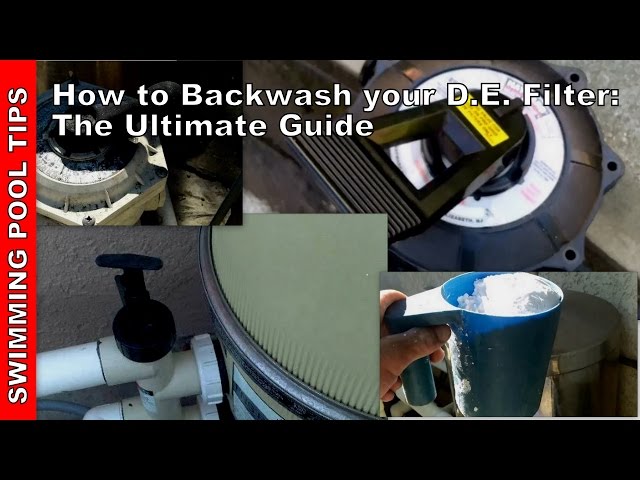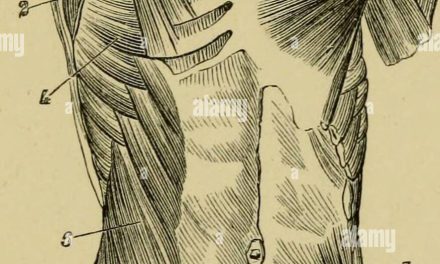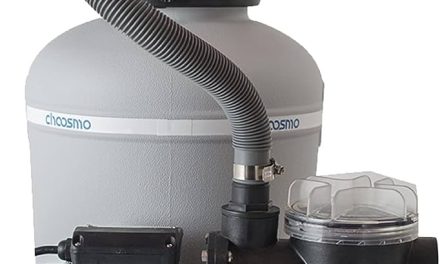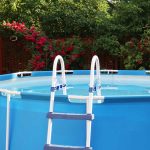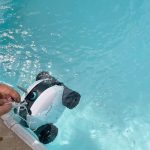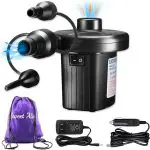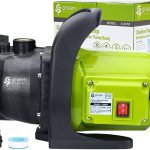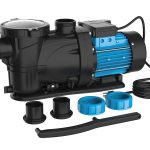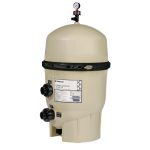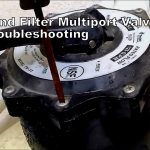The amount of Diatomaceous Earth (D.E.) Needed for a pool filter depends on the size of the filter and the manufacturer’s recommendations.
The quantity of D. E. Required for different pool filters can vary, so it is best to consult the manufacturer’s guidelines or the pool filter manual for accurate measurements and instructions. Taking into account factors such as the size and model of the filter will help ensure the correct amount of D.
E. Is used, resulting in optimal filtration and maintenance of the pool.
Factors Affecting D E Requirements
Factors Affecting D E Requirements When determining the amount of D E (Diatomaceous Earth) needed for your pool filter, several factors come into play. The first consideration is the size of your pool. It’s crucial to calculate the appropriate amount to ensure optimal filtration.
Additionally, the type of filter you have will also impact the D E requirements. Different filters require different amounts of D E to function efficiently. Lastly, the quality of your water plays a significant role. Water with higher levels of impurities may require more D E to achieve the desired level of filtration.
By taking these factors into account, you can determine the ideal amount of D E needed for your pool filter, ensuring clean and clear water for your swimming enjoyment.
Calculating D E Requirements
Calculating the right amount of diatomaceous earth (D E) for your pool filter is crucial. To determine this, you need to consider the pool’s surface area and the total gallons of water it holds. Start by measuring the surface area of your pool, and then calculate the number of gallons using a reliable formula.
Once you have these measurements, you can use the D E to water ratio to determine how much D E your filter requires. The ratio may vary depending on the manufacturer’s recommendations, so it’s best to refer to the filter’s manual or consult with a pool professional.
Remember, using the correct amount of D E is vital for maintaining optimal filtration and water clarity in your pool.
Recommended D E Amounts
When it comes to the recommended D E amounts for pool filters, it’s important to consider different pool sizes. For various filter types, there is an ideal D E amount that should be used. However, adjustments may be necessary depending on the water quality.
By carefully measuring and determining the appropriate D E amounts, pool owners can ensure optimal filtration and cleanliness for their pools. It’s crucial to avoid adding too much D E, as this can lead to clogging and decreased filter efficiency.
Additionally, regular backwashing and recharging of the filter are important maintenance steps to keep the filter running smoothly. Remember to always follow the manufacturer’s guidelines and consult with a professional if needed. In conclusion, understanding the recommended D E amounts for pool filters is essential for maintaining a clean and healthy pool.
Applying D E To The Pool Filter
Applying D E to the pool filter is an essential step in maintaining its efficiency. When adding D E to the skimmer, it’s important to follow proper methods for mixing. Start by turning off the pool pump to prevent any accidents.
Then, slowly pour the recommended amount of D E into the skimmer while keeping a watchful eye on the pressure gauge. Remember to always wear gloves and safety goggles to protect yourself from potential skin and eye irritation. Additionally, make sure to keep pets and children away from the area during the application process.
By taking these safety precautions and following the correct procedures, you can efficiently apply D E to your pool filter and enjoy clean and sparkling water all season long.
Backwashing And Recharging The Filter
Backwashing and recharging the filter are crucial steps in pool maintenance. The importance of backwashing cannot be overstated. Performing this process regularly helps remove debris and contaminants trapped in the filter. It ensures that the filter operates at its optimal capacity and keeps the pool water clean and clear.
When backwashing, proper techniques should be followed to achieve the desired results. This includes checking the pressure gauge, turning off the pump, and locating the backwash valve. Once the backwashing is complete, the next step is recharging the filter with Diatomaceous Earth (D.
E. ). D. E. Helps trap smaller particles that might have escaped the initial filtration process. By adding the correct amount of D. E. , the filter can maintain its efficiency and provide crystal clear water for a pleasant swimming experience.
Best Practices For D E Maintenance
Regular inspections and cleaning are essential for maintaining optimal performance and longevity of your pool filter. By regularly inspecting the filter, you can identify any issues or damage and address them promptly. Additionally, monitoring the D E (diatomaceous earth) levels is crucial.
The D E acts as a filtering agent and needs to be replenished when it becomes saturated. If the D E is not effectively trapping contaminants, it can lead to poor water quality. Replacing the D E when necessary ensures that your pool filter operates efficiently.
Remember to follow the manufacturer’s guidelines for the proper amount of D E to add. By practicing these best maintenance practices, you can enjoy a clean and healthy pool all season long.
Popular D E Filter Brands And Models
Popular D E Filter Brands and Models include Hayward Pro Grid Filters, Pentair DE Filters, and other reliable options. These brands offer a range of models to suit different pool sizes and needs. Whether you have a small backyard pool or a large commercial pool, there is a DE filter that will work for you.
Hayward Pro Grid Filters are known for their durability and efficient filtration system. Pentair DE Filters are also highly rated and offer excellent performance. Other reliable brands and models are available as well, providing customers with a variety of options to choose from.
When it comes to maintaining a clean and clear pool, investing in a quality DE filter is essential.
:max_bytes(150000):strip_icc()/TAL-casa-palopo-pool-ANTIGUAGT0823-86740e58bda6499eb516f344612d21d8.jpg)
Credit: www.travelandleisure.com
Troubleshooting Common D E Filter Issues
Troubleshooting common D E filter issues like cloudy water or poor filtration can be quite frustrating. One issue you might encounter is excessive D E loss, which can impact the effectiveness of your filter. Another problem is filter clogging or pressure problems, which can lead to reduced water flow and compromised filtration.
To address these issues, it’s important to regularly check and maintain your filter, ensuring that it is properly cleaned and backwashed. Additionally, you should monitor the D E levels in your filter and add more if necessary. By understanding and troubleshooting these common issues, you can ensure that your pool filter is functioning optimally, resulting in clear and clean water for your enjoyment.
Frequently Asked Questions Of How Much D E For Pool Filter?
How Much Diatomaceous Earth Do You Put In A Pool Filter?
Add diatomaceous earth to your pool filter according to the manufacturer’s instructions.
How Do I Know If I Have Enough De In My Filter?
To ensure proper filtration, follow these steps to determine if you have enough DE in your filter: 1. Consult your filter’s manual for the recommended amount of DE based on its size. 2. Measure the appropriate amount of DE powder using a measuring cup or scale.
3. Add the DE powder to the skimmer or filter according to the manufacturer’s instructions. 4. Check the pressure gauge on your filter. If it reaches 8-10 psi above the starting pressure, you may need to add more DE. Remember, it’s essential to follow the manufacturer’s guidelines for your specific filter to achieve optimal filtration.
How Many Pounds Does A De Scoop Hold?
A DE scoop can hold pounds.
Conclusion
To ensure the optimal performance of your pool filter, it’s important to know how much Diatomaceous Earth (DE) to add. By understanding the proper DE dosage, you can effectively maintain water clarity and hygiene in your pool. The amount of DE you need to add depends on several factors, such as the size of your pool and the type of filter you have.
It’s crucial to follow the manufacturer’s recommendations for your specific filter. Typically, the dosage ranges from 1-3 pounds of DE per 10 square feet of filtration area. Remember to distribute the DE evenly across the skimmer or into the filter according to the manufacturer’s instructions.
Avoid adding too much, as it can lead to clogging and reduced filter efficiency. Regularly check and monitor your filter pressure to ensure proper functioning. By correctly adding the appropriate amount of DE, you can optimize the performance of your pool filter and enjoy crystal clear water all season long.
Remember to refer to the manufacturer’s guidelines and maintain regular filter maintenance for the best results.

